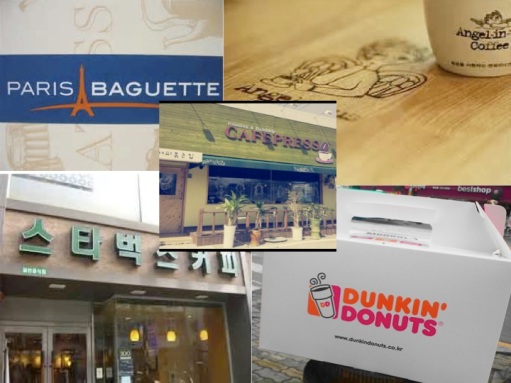For many people, finding their way to their morning cup of coffee is nearly a religious experience–one filled with rituals, precise preparation, and of course, the right coffee. Heaven forbid if anyone or anything gets between me and my first morning cup of Joe. Coffee and Korea have become almost synonymous. Korea is now a world leader in terms of both the number of coffee outlets here and coffee consumption.
 |
| Warning: Don't get between me and my first cup of Joe in the morning |
Years before Starbucks and Dunkin’ Donuts reached these friendly shores, and before Paris Baguette and Angel-In-Us blanketed the Korean landscape, traditional Korean coffee houses, called Ta-Bahngs (다방), could be found everywhere. Hard core black coffee was presented in ceramic cups and saucers by young women who were expected to sit with customers (usually men) and serve-up smiles and entertaining banter.
Daegu’s old-style 다방 have gone the way of the oxen and carts that were regularly seen on the city’s streets. Today, the Starbucks’ mermaid and Angel-In-Us angel are the ubiquitous new ladies on the block.

Daegu’s coffee options: The big coffee franchises and your local independent coffee house. My personal favorite, Cafepresso (center), in Gyeungsan
Caution: Coffee Is Hot! Korea and Coffee by the Numbers:
- Paris Baguette, with more than 2,900 stores in Korea, also has 15 stores in the U.S. and more than 50 in China.
- Starbucks, with 288 coffee shops in Korea, opened its first store at Ewha Women’s University in July 1999.
- Daegu’s Exhibit and Convention Center was the site of the Daegu Coffee Fair, an international trade show for coffee related products, which just took place right here in Daegu, Nov. 1-4.
- South Korea is the 11th biggest coffee market in the world. By 2011, the number of coffee shops in Korea reached 12,381–which was up 54% from just the previous year.
- Brazil and Vietnam (a distant 2nd), are the world’s leading exporters of coffee.
I like to support my favorite local coffee house, Cafepresso, located just south of Yeungnam University. Owner and barista, Seung Ho Baek, buzzes with enthusiasm and pride as he serves up lattes, espresso, Dutch coffee, and other wonderfully customized brews. And, it’s hard to refrain from Cafepresso’s mouth watering pastries and desserts. According to Seung Ho, “both young and old love their coffee in Korea.”
One might wonder how local, independent coffee houses like his can thrive given the competition from the big coffee franchises. While big chains have, according to Seung Ho, “overwhelming power with big money which is always a threat for the weak, there are pros and cons.” He notes that “big brands like Starbucks create a good image of espresso coffee for those who are unfamiliar with espresso style.” Ever the optimist, he sees the “big guys” providing coffee awareness which benefits his business.
Coffee is believed to have first been discovered in the northeast region of Ethiopia. Today, green coffee is one of the most highly traded commodities in the world. It is also one of the most consumed drinks. How does that intoxicating brew get to you? First, the ripe coffee berry gets picked, then processed, dried, roasted, ground, brewed, and finally, served according to your preference.
Speaking of preferences, mine are a hot cafe latte or an Americano with milk or cream. The latter, sometimes presents me with a problem, as most Korean servers can’t seem to visualize an Americano with white stuff in it. But, I go with the flow, and in the Daegu area, what’s flowing is good coffee.

No comments:
Post a Comment